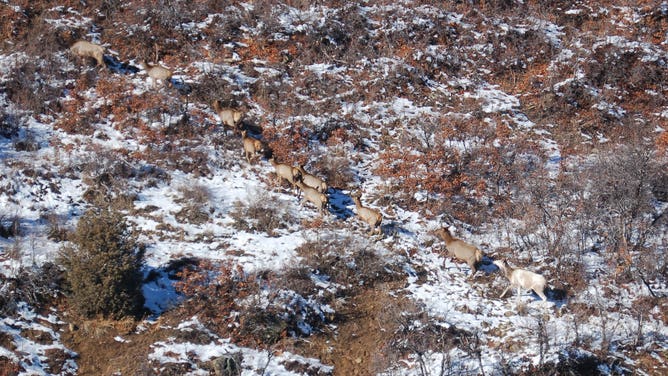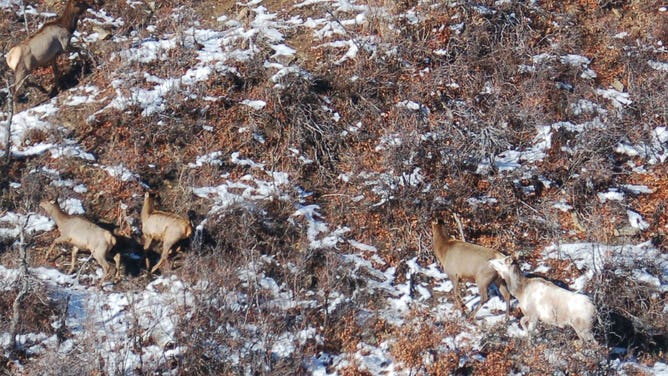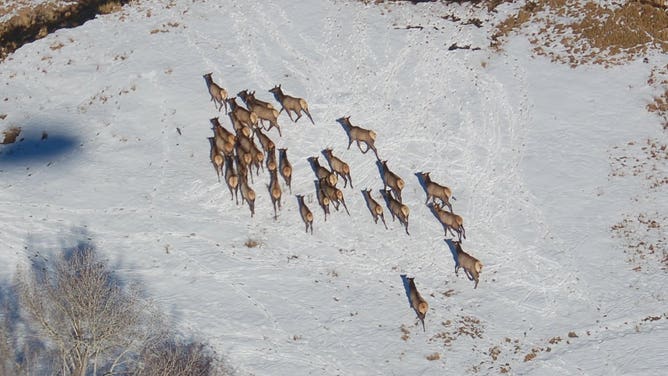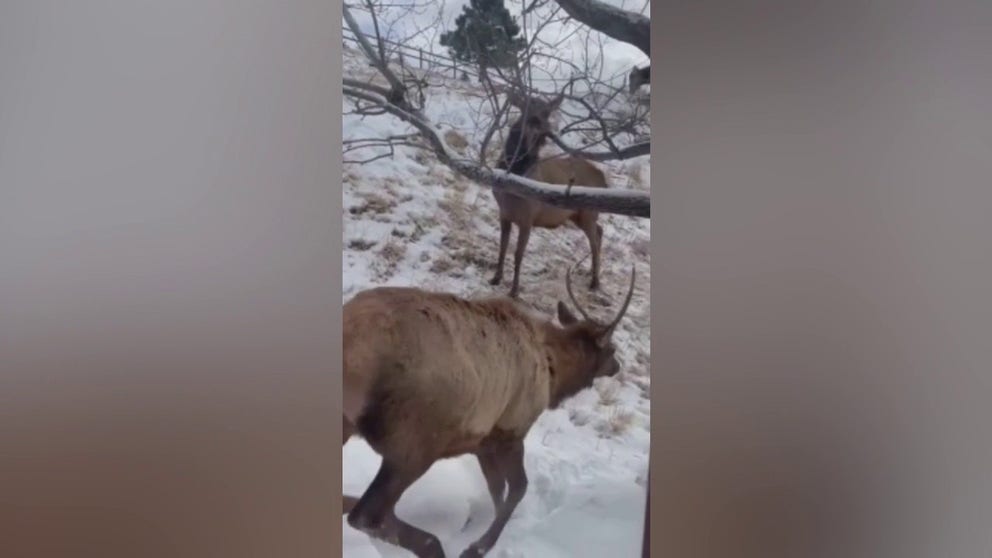See it: Rare piebald cow elk spotted in Colorado
Known as the piebald trait, it occurs in about 1 out of every 100,000 elk, according to the Colorado Parks and Wildlife Southwest Region.
FILE – Elk wander across fresh snow in central Colorado
Elk are seen roaming across the snowy landscape close to the town of Evergreen, Colorado. On the morning of February 6, light snow fell across the mountains and foothills of central Colorado. (Video: @Fly_Agaric via Storyful)
MONTROSE, Colo. – Images taken last week in southwestern Colorado show a female, or cow, elk with a rare genetic trait that causes her to have a mostly white coat of fur.
Known as the piebald trait, the genetic anomaly occurs in about 1 out of every 100,000 elk, according to the Colorado Parks and Wildlife. Most elk are typically a brownish color, ranging from light brown in winter to reddish-tan in summer.
The piebald cow elk was spotted walking with several others, all sporting light brown fur.

Piebald cow elk (lower right) with brown elk in Colorado.
(@CPW_SW / X / FOX Weather)
WATCH: BULL ELK RAMS VEHICLE IN CANADIAN NATIONAL PARK
In the image below, she can be spotted bringing up the rear of the line of elk.

Piebald cow elk (lower right) with brown elk in Colorado.
(@CPW_SW / X / FOX Weather)
The elk were spotted during a big game classification flight conducted by CPW. The agency flew helicopters at low altitudes to study the local elk population, with the goal of placing GPS collars on 75 elk calves in December.
"The data we collect from these efforts is critical to help us proactively manage elk populations in the state," said Nathaniel Rayl, wildlife researcher with CPW.
HOW DEER AND ELK SURVIVE HARSH, SNOWY WINTER
Rayl noted how the lower temperatures and snowfall of winter provide better conditions for this type of research.
In fact, elk, along with moose, deer and pronghorn, prefer cooler temperatures, he said. The animals are less stressed than if captured in the summer, when they may overheat and die.

Piebald cow elk (lower right) with brown elk in Colorado.
(@CPW_SW / X / FOX Weather)
He added that the deeper snow cushions the animal and helps prevent injuries. The animals do not run as far, which makes capturing them easier and quicker.
During the last gasps of winter in March, CPW will then collar 120 pregnant cow elk. Rayl said conducting their work during that time allows researchers to gather critical information about the animals’ pregnancy and the condition of their bodies.
"The classification flights will be critical to help us understand how last winter's weather conditions may have affected birth rates and survival of elk calves and fawns last summer," said Brad Banulis, senior wildlife biologist with the CPW Northwest Region.

A herd of elk in the snow in Colorado.
(@CPW_SW / X / FOX Weather)
"This is a critical data point to help us manage big game populations in the state, and we collect it in a manner that minimizes the stress on animals," he added.
He noted that the data collection is done to manage robust and healthy wildlife populations, so the agency considers the animals' welfare during their research and flights.
